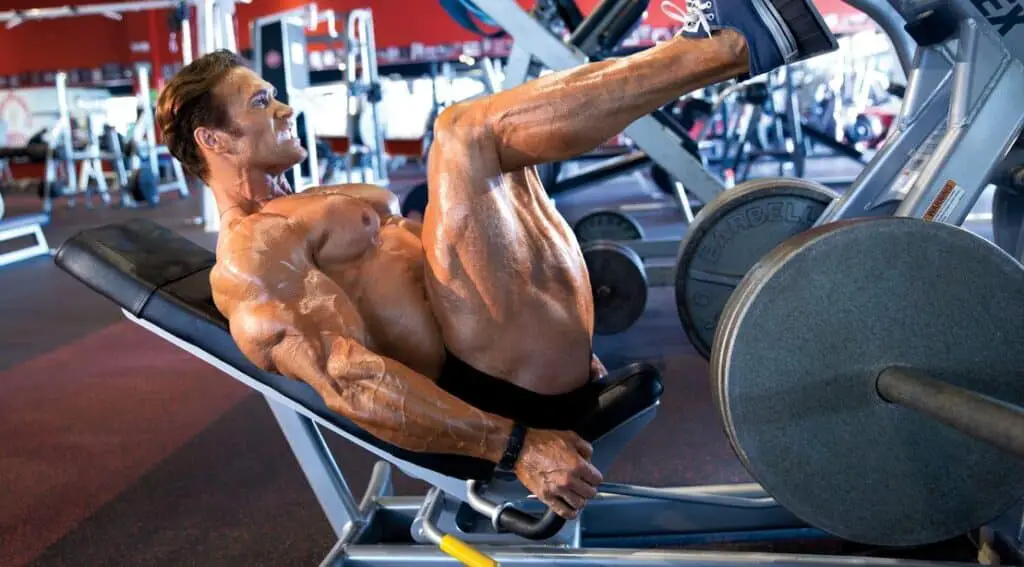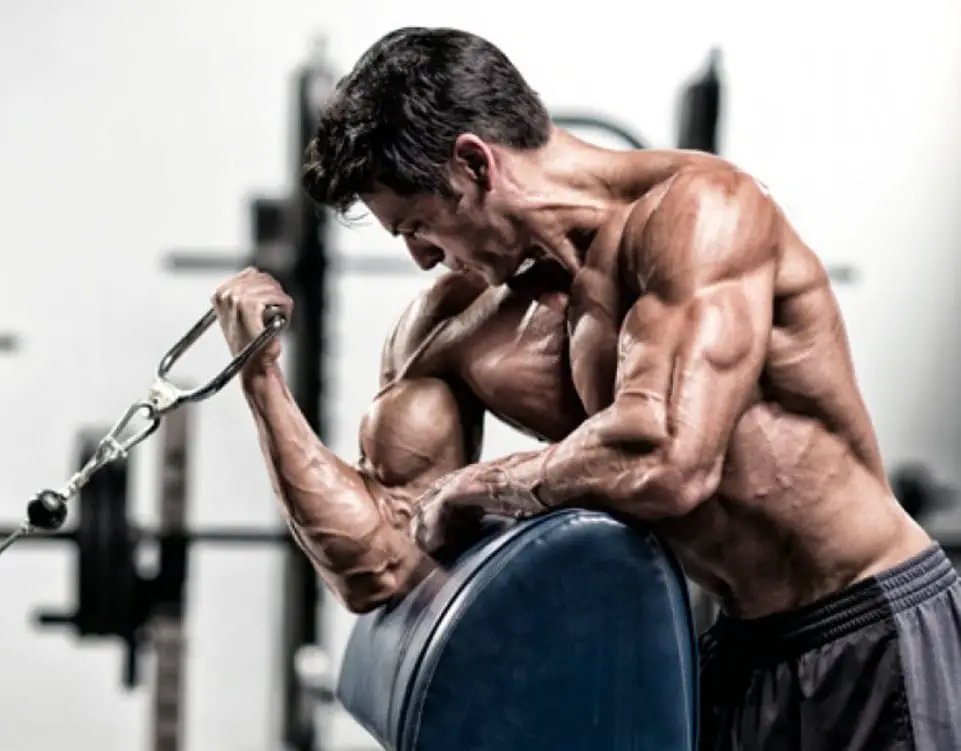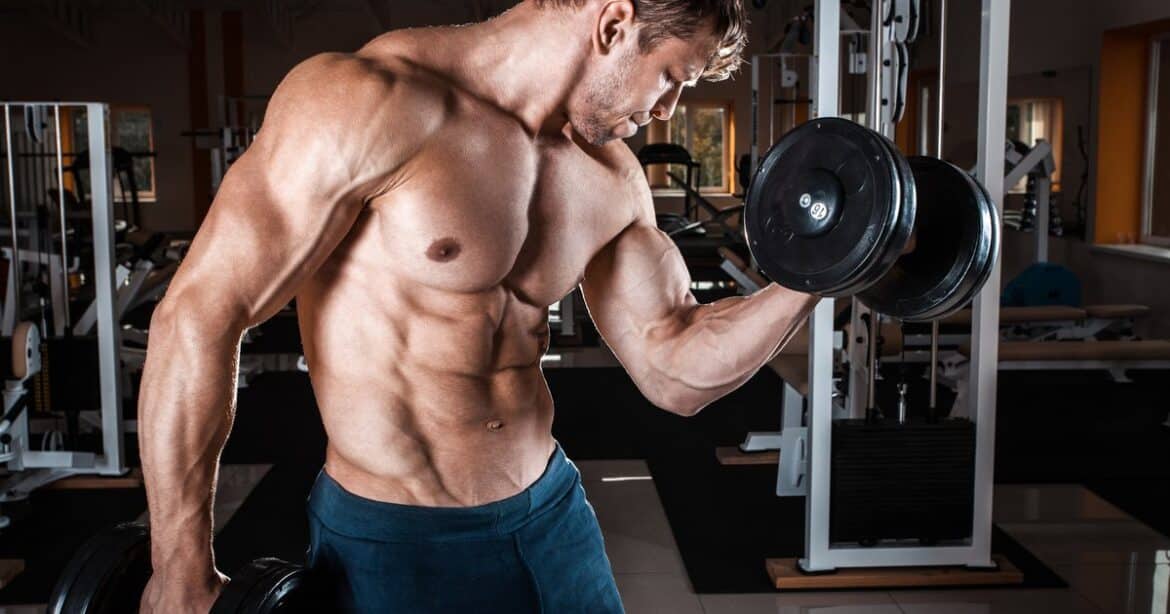Introduction
How Much Cardio For Bodybuilding: Cardiovascular exercise, often referred to simply as “cardio,” and bodybuilding may seem like contrasting worlds within the realm of fitness. While bodybuilding primarily focuses on building muscle mass, strength, and aesthetics, cardio emphasizes cardiovascular health, endurance, and calorie burn. However, the synergy between these two seemingly different forms of exercise holds a crucial place in the world of bodybuilding. In this exploration of cardio in bodybuilding, we will delve into the role of cardiovascular exercise in achieving a balanced and well-rounded physique. We’ll discuss how cardio complements the muscle-building process, aids in fat loss, and supports overall cardiovascular health. Moreover, we’ll address the essential question of how much cardio is ideal for bodybuilders, considering individual goals, body types, and training regimens.
As we navigate the intersection of cardio and bodybuilding, we will uncover the ways in which cardio can be a valuable tool in the pursuit of a chiseled and healthy physiqueThe fusion of cardiovascular exercise and bodybuilding represents a dynamic approach to achieving a comprehensive and sculpted physique. Cardio, with its emphasis on heart health and endurance, may appear to be at odds with the muscle-centric world of bodybuilding.
However, their coexistence is essential for the aspiring bodybuilder seeking a harmonious balance between muscle development and overall fitness .In this exploration of the role of cardio in bodybuilding, we will unveil the intricate relationship between these two disciplines. Cardio is not merely a tool for shedding excess body fat; it plays a pivotal role in muscle recovery, conditioning, and sustaining energy levels during rigorous workouts. Moreover, it contributes to overall cardiovascular health, ensuring that the body can efficiently supply oxygen and nutrients to working muscles.

How much cardio is good for bodybuilding?
The bottom line is cardio can actually improve your gains if you don’t overdo it. For best results don’t do more than three, 30-minute cardio workouts each week. Never do them before you lift. Again, watch your diet and lift like you mean it.
The ideal amount of cardio for bodybuilding can vary depending on individual goals, body type, and training regimen.
However, there are some general guidelines that bodybuilders often follow:
Frequency: For bodybuilders, it’s typically recommended not to exceed three to four cardio sessions per week. This frequency allows for cardiovascular conditioning and calorie expenditure without risking excessive muscle loss or interfering with muscle recovery and growth.
Duration: Cardio sessions are often kept relatively short, typically around 30 minutes per session. These sessions can be long enough to provide cardiovascular benefits and burn calories without overtaxing the body’s energy reserves.
Timing: It’s generally advised not to perform cardio immediately before weightlifting sessions. Cardio can deplete glycogen stores, which may impact your energy and strength during weightlifting. Instead, many bodybuilders prefer to do cardio on separate days or at a different time of day from their weightlifting workouts.
Intensity: Bodybuilders often focus on moderate-intensity cardio, such as steady-state or low-intensity steady-state (LISS) cardio. This allows for effective calorie burning while minimizing the risk of muscle breakdown, which can occur with high-intensity or excessive cardio.
Type: Common forms of cardio for bodybuilders include walking, jogging, cycling, or using cardio machines like elliptical or stair climbers. The choice of cardio type often depends on personal preference and joint health.
What cardio is best for building muscle?
Long bouts of steady state cardio have been proven to increase cortisol levels and break down muscle. Instead, opt for exercises such as high intensity interval training, walking lunges, sled drags/pushes/pulls, loaded carries, sprints that build muscle while burning fat.
When the goal is to build muscle while incorporating cardiovascular exercise, it’s crucial to choose cardio workouts that minimize muscle breakdown and promote muscle growth.
Here are some cardio methods that can be beneficial for building muscle:
High-Intensity Interval Training (HIIT): HIIT involves short bursts of intense activity followed by brief rest periods. This type of cardio can help preserve muscle mass while promoting fat loss and improving cardiovascular fitness. Examples include sprinting, cycling, or bodyweight exercises like burpees or jump squats.
Loaded Carries: Carrying heavy weights, such as dumbbells or kettlebells, for a specific distance or time can engage multiple muscle groups while providing a cardiovascular challenge. Farmer’s walks, suitcase carries, or overhead carries are excellent options.
Sled Drags/Pushes/Pulls: Pushing or pulling a weighted sled can provide an intense full-body workout that builds muscle and improves conditioning simultaneously.
Walking Lunges: Incorporating walking lunges into your routine not only targets the lower body but also challenges your cardiovascular system. Adding weight to lunges can increase the muscle-building benefits.
Sprints: Sprinting is an excellent way to engage fast-twitch muscle fibers and stimulate muscle growth. Sprint intervals, such as hill sprints or sprinting on a track, can be effective.
How much cardio per day?
More technically, cardiovascular exercise challenges both your cardiovascular and respiratory systems to increase the heart’s ability to pump blood and the lungs’ and heart’s ability to move oxygen throughout the body. Doctors recommend at least 30 minutes per day of cardiovascular exercise most days of the week.The recommended amount of cardio per day can vary depending on individual fitness goals and fitness levels. However, general guidelines for cardiovascular exercise suggest at least 150 minutes of moderate-intensity aerobic activity or 75 minutes of vigorous-intensity aerobic activity per week for adults. This can be broken down into sessions lasting 30 minutes a day for most days of the week.
Here’s a breakdown:
Moderate-intensity aerobic activity: This includes activities like brisk walking, cycling at a moderate pace, or water aerobics. Aim for at least 150 minutes per week, which translates to about 30 minutes per day on most days of the week.
Vigorous-intensity aerobic activity: This includes activities like running, fast cycling, or high-intensity interval training (HIIT). You can achieve the recommended amount with just 75 minutes per week, which can be broken down into shorter, more intense sessions.
Why do bodybuilders fast cardio?
Also, fasting during cardio may even reduce muscle breakdown by increasing fat oxidation, thus sparing lean muscle mass . Losing muscle mass during a fat loss phase is a serious concern, especially for bodybuilders and other muscular individuals.
Bodybuilders often incorporate fasted cardio into their routines for several reasons:
Enhanced Fat Burning: When you perform cardio in a fasted state (typically in the morning before eating), your body has lower glycogen (carbohydrate) stores, as you haven’t eaten for several hours. This can lead to a higher reliance on stored fat as a fuel source during the workout, potentially increasing fat oxidation and aiding in fat loss.
Calorie Control: Fasted cardio can help control calorie intake. Since you haven’t consumed breakfast before the workout, you’re less likely to compensate for the calories burned during the session by eating more afterward. This can be advantageous for those in a calorie deficit aiming for fat loss.
Muscle Sparing: Fasted cardio may help reduce muscle breakdown by increasing the use of fat for energy, sparing lean muscle mass. Muscle preservation is crucial for bodybuilders and athletes who want to maintain or even increase their muscle mass while shedding body fat.
Hormone Regulation: Some research suggests that fasted cardio may impact hormones related to fat metabolism, such as insulin and cortisol, in ways that can be beneficial for fat loss.
Convenience: Fasted cardio can be convenient for individuals who prefer to work out early in the morning before breakfast or who have busy schedules and find it challenging to fit in meals before exercise.
How many minutes of cardio a day bodybuilding?
For best results, cardio should only be performed 3-to-4 times per week, on non-resistance training days. You should increase the length of your cardio session by 5 minutes each week until you reach a total of 30-35 minutes.
The amount of cardio a bodybuilder should incorporate into their daily routine can vary based on individual goals, fitness levels, and training programs. However, a common guideline is to aim for approximately 3 to 4 cardio sessions per week on non-resistance training days.
Here’s a suggested breakdown:
Frequency: 3 to 4 cardio sessions per week is a good starting point for many bodybuilders. This frequency allows for cardiovascular conditioning and calorie expenditure without risking excessive muscle loss or interfering with muscle recovery and growth.
Duration: Cardio sessions are typically kept relatively short, especially for bodybuilders, with durations ranging from 30 to 45 minutes per session. These sessions can provide cardiovascular benefits and burn calories without overtaxing the body’s energy reserves.
Progression: It’s a good idea to gradually increase the length of your cardio sessions over time. Adding 5 minutes per week until you reach a total of 30 to 45 minutes per session is a sensible approach. This progression helps prevent plateaus and allows for continued improvements in cardiovascular fitness.
Intensity: Cardio intensity can vary depending on individual preferences and goals. Bodybuilders often prefer moderate-intensity steady-state (MISS) cardio, which involves maintaining a consistent, moderate pace throughout the session. However, high-intensity interval training (HIIT) or other forms of cardio can also be incorporated, depending on specific objectives.
Timing: While the timing of cardio can vary, many bodybuilders prefer to perform cardio either in the morning on an empty stomach (fasted cardio) or after weightlifting sessions. This timing can help maximize fat burning and minimize the risk of muscle breakdown.
How many hours of cardio a day is good?
The Physical Activity Guidelines issued by the U.S. The Department of Health and Human Services recommends at least 150 minutes per week of moderate-intensity physical activity, think of it as 30 minutes, five days a week—for all adults, even the elderly and disabled.The recommended amount of cardio per day or per week can vary based on individual fitness goals, fitness level, and overall health. However, the general guideline provided by the U.S. Department of Health and Human Services is at least 150 minutes per week of moderate-intensity aerobic activity for all adults. This equates to approximately 30 minutes a day on most days of the week.
Here’s a breakdown:
Frequency: Aim for at least 150 minutes of moderate-intensity cardio per week, spread out over several days. This can be achieved with sessions lasting around 30 minutes a day on most days of the week.
Intensity: Moderate-intensity aerobic activities include brisk walking, cycling at a moderate pace, swimming, or water aerobics. These activities should make you breathe harder and your heart rate increase but still allow you to carry on a conversation.
Is cardio worth it for bodybuilders?
But when combined with proper lifting and the right frequency as little as a few short cardio sessions each week it could be exactly what you’re looking for to make better gains. In fact, properly implemented steady-state cardio can make you a better lifter, even if your goal is getting more muscular and strong.Cardiovascular exercise, when incorporated strategically, can indeed be valuable for bodybuilders. While the primary focus of bodybuilding is muscle growth, aesthetics, and strength, cardio can offer several benefits that complement these goals.
Here’s why cardio can be worth it for bodybuilders:
Fat Loss: Cardio is an effective tool for burning calories and promoting fat loss. Bodybuilders often go through phases where reducing body fat while maintaining muscle definition is a priority. Cardio can help create a calorie deficit, which is essential for shedding excess body fat.
Cardiovascular Health: Cardiovascular exercise supports heart health and overall cardiovascular fitness. A strong cardiovascular system can improve stamina, endurance, and recovery between sets during weightlifting sessions.
Improved Recovery: Moderate-intensity cardio can enhance blood flow and circulation, which can aid in muscle recovery. It helps remove waste products like lactic acid from muscles, reducing post-workout soreness.
Calorie Control: Cardio can help manage calorie intake by burning additional calories, allowing for greater flexibility in your diet while still maintaining a calorie deficit during fat loss phases.
Conditioning: Cardio helps improve overall conditioning and stamina, which can be beneficial for both workouts and everyday activities. Better endurance can lead to more productive training sessions.
What is the role of cardio in bodybuilding?
Cardio is used by bodybuilders to help increase oxygen flow to muscles and burn excess body fat. For best results, cardio should only be performed 3-to-4 times per week, on non-resistance training days. You should increase the length of your cardio session by 5 minutes each week until you reach a total of 30-35 minutes.
Cardiovascular exercise, often referred to as cardio, plays several important roles in bodybuilding:
Fat Loss: Cardio is a valuable tool for burning calories and promoting fat loss. Bodybuilders often use cardio strategically during fat loss phases to create a calorie deficit, which is essential for shedding excess body fat while aiming to maintain muscle mass.
Improved Cardiovascular Health: Cardiovascular exercise supports heart health and overall cardiovascular fitness. A strong and efficient cardiovascular system can improve endurance, stamina, and recovery between sets during weightlifting sessions.
Muscle Recovery: Moderate-intensity cardio can enhance blood flow and circulation, aiding in muscle recovery. It helps remove waste products like lactic acid from muscles, reducing post-workout soreness and facilitating quicker recovery.
Calorie Control: Cardio helps manage calorie intake by burning additional calories. This can provide greater flexibility in your diet while still maintaining a calorie deficit during periods of fat loss.
Conditioning: Cardio improves overall conditioning and stamina. Better endurance can lead to more productive training sessions, allowing bodybuilders to push themselves harder during resistance training.

Conclusion
In the realm of bodybuilding, where every repetition, every meal, and every strategy is meticulously planned, the role of cardio emerges as a critical element in the pursuit of a sculpted and balanced physique. Our exploration into how much cardio is suitable for bodybuilding has revealed that cardiovascular exercise, when employed strategically, can be a potent ally. Cardio plays a multifaceted role in the world of bodybuilding, offering benefits such as fat loss, cardiovascular health, muscle recovery, and conditioning. It contributes to a well-rounded approach to fitness, enhancing endurance and stamina, thereby supporting intense weightlifting sessions.
However, the ideal amount of cardio varies depending on individual goals, fitness levels, and training regimens. For bodybuilders, the recommendation often falls within the range of 3 to 4 cardio sessions per week, with sessions lasting around 30 to 45 minutes. This approach allows for cardiovascular conditioning and calorie expenditure without compromising muscle growth or recovery.
It is essential to adjust cardio to align with specific objectives, whether it be fat loss, muscle maintenance, or overall cardiovascular fitness. Ultimately, the integration of cardio into a bodybuilding routine is a matter of striking the right balance, where cardiovascular vitality harmonizes with muscular mastery, leading to the creation of not just a powerful physique but a healthy and enduring one.

